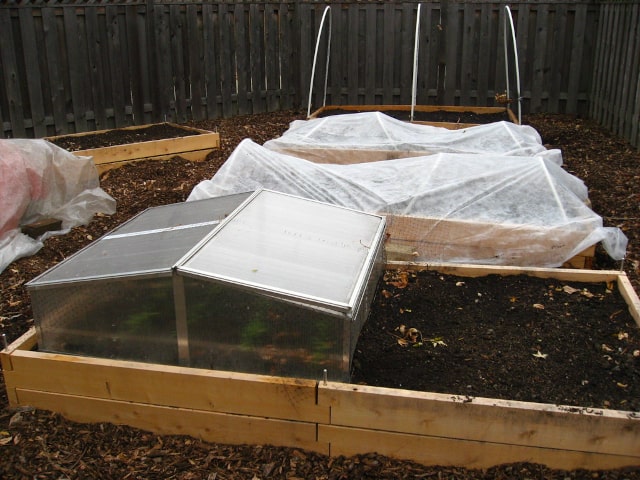Winter Garden Maintenance: Cold Weather Tips

As the days grow shorter and the air crisper, it's time to prepare your garden for the cold months ahead. Winter garden maintenance isn't just about survival; it's about setting the stage for a vibrant spring. Imagine your garden as a sleeping beauty, waiting to be awakened by the warm kiss of spring. But first, it needs protection from the cold. So, let's dive into some essential winter garden maintenance tips for cold weather.
Winterizing Your Garden: The First Steps
Before the first frost hits, it's crucial to winterize your garden. This process involves several steps, each vital for your garden's health and survival.
Clean Up: The Garden Equivalent of a Good Spring Clean
Start by removing any dead or dying plant material. This not only makes your garden look tidier but also helps prevent pests and diseases from overwintering. Think of it as a good spring clean, but in reverse.
Mulch: The Garden's Winter Blanket
Apply a layer of organic mulch around your plants. Mulch acts like a cozy blanket, insulating the soil and protecting plant roots from the cold. It also helps retain moisture and suppresses weeds. According to the Royal Horticultural Society, a layer of organic mulch can make a significant difference in winter protection.
Cold Weather Plants: Heroes of the Winter Garden
Some plants thrive in cold weather, adding color and interest to your winter garden. Incorporating cold weather plants into your garden design ensures that your garden remains visually appealing even in the coldest months.
Pansies: Tougher Than They Look
Pansies are a popular choice for winter gardens. They're hardier than they look and can survive light frosts. Plus, they come in a variety of colors, perfect for brightening up a dreary winter day.
Hellebores: The Christmas Rose
Hellebores, also known as Christmas roses, bloom in late winter to early spring. They're known for their ability to tolerate cold temperatures and their beautiful, delicate flowers.
Garden Frost Protection: Shielding Your Plants
Frost can be a gardener's worst enemy, but with the right garden frost protection, you can shield your plants from the cold.
Cover Up: Using Cloches and Row Covers
Cloches and row covers are excellent for protecting plants from frost. They act like mini greenhouses, trapping heat and keeping the cold at bay. For a more detailed guide, check out this article on frost protection from Gardeners' World.
Water Wisely: The Surprising Role of Water
Did you know that water can act as an insulator? Watering your plants before a frost can help protect them. Wet soil holds heat better than dry soil, providing an extra layer of protection.

Winter Plant Care: Nurturing Your Garden Through the Cold
Winter plant care isn't just about protection; it's also about nurturing your garden so it can thrive come spring.
Prune with Caution: Less is More
Pruning in winter can stimulate new growth, which can be damaged by the cold. So, prune with caution and only when necessary. Remember, less is more when it comes to winter pruning.
Feed Me: Nutrients for Winter Health
Giving your plants a good feed before the cold sets in can help them stay healthy throughout the winter. Use a slow-release fertilizer for best results.
Seasonal Gardening: Embracing the Winter Season
Seasonal gardening is about more than just survival. It's about embracing the unique challenges and opportunities that each season brings.
Winter Interest: Texture and Color
Adding plants with interesting textures and colors can create a beautiful winter landscape. Consider plants like redtwig dogwood, with its vibrant red stems, or ornamental grasses that add movement and texture.
Wildlife Haven: Caring for Our Feathered Friends
Winter gardens can also provide a haven for wildlife. Birds, in particular, benefit from gardens that provide food and shelter during the cold months. Consider adding bird feeders and plants that produce winter berries.

Conclusion: Your Garden Awaits
Winter garden maintenance isn't just about keeping your garden alive; it's about setting the stage for a beautiful spring. By winterizing your garden, choosing the right cold weather plants, providing garden frost protection, practicing good winter plant care, and embracing seasonal gardening, you can ensure that your garden thrives throughout the winter and bursts into life come spring.
So, are you ready to transform your garden into a winter wonderland? Remember, every effort you make now will be rewarded with a garden that's healthier, more vibrant, and more beautiful. Happy gardening!
FAQs
When should I start winterizing my garden?
- Start winterizing your garden in late autumn, before the first frost hits. This gives you enough time to clean up, mulch, and protect your plants.
What are some good cold weather plants?
- Some good cold weather plants include pansies, hellebores, redtwig dogwood, and ornamental grasses. These plants can add color, texture, and interest to your winter garden.
How can I protect my plants from frost?
- You can protect your plants from frost by using cloches or row covers, watering the soil before a frost, and choosing plants that are naturally frost-tolerant.
Should I prune my plants in winter?
- Prune with caution in winter. Pruning can stimulate new growth, which can be damaged by the cold. Only prune when necessary and remember, less is more.
How can I attract wildlife to my winter garden?
- You can attract wildlife to your winter garden by providing food and shelter. Bird feeders and plants that produce winter berries can be particularly beneficial.
0 Response to "Winter Garden Maintenance: Cold Weather Tips"
Post a Comment